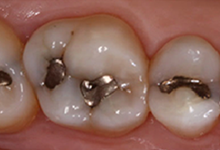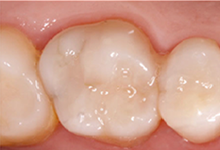

Tooth Fillings
There are different types of dental filling that we use, and they are:
The term "dental bonding" can refer to a number of related dental techniques. In general, after a tooth's surface has been properly prepared, a white colored dental filling material is bonded onto the tooth. Dental bonding might be utilized as a way to improve the appearance of a cosmetic defect found on the surface of a tooth, to replace tooth structure that has chipped away or broken, or to repair damage caused by tooth decay. At an extreme, this technique can be used to resurface the entire front side of a tooth so to improve its cosmetic appearance.
As a benefit, when compared with the other cosmetic dentistry techniques reviewed on this page dental bonding can be relatively inexpensive and is usually a "completed in one visit" type dental procedure. As a disadvantage, dental bonding material has a tendency to stain as time passes and in general isn't as lasting or durable a treatment as other cosmetic dental procedures. However, and one more point in the plus column, if dental bonding does chip or break it can usually be easily patched or repaired.
Composite veneers cover the facial surface of teeth to change tooth color, position or shape. Addition of composite to tooth structure increases tooth size and therefore, there is often tooth reduction to make room for composite placement. Amount of reduction is determined by position of original tooth in relation to the desired position and color of tooth structure in relation to the thickness of composite materials required to block out color.
 before
before
 after
after

"We provide convenient hours and affordable prices so you can have the smile you've always wanted"
